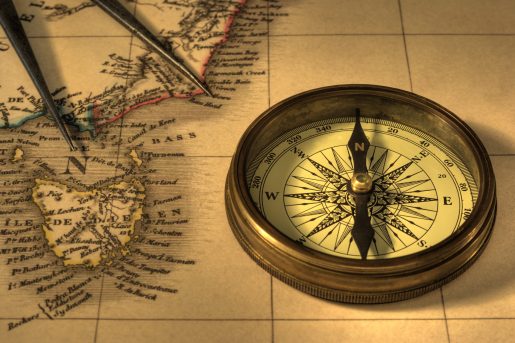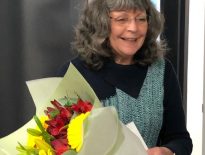
Chart our own course

Run our own race and become a world leader with an island strategy
Tasmania’s tough border stance in response to the COVID pandemic recently lead to the Queensland Deputy Premier Steven Miles questioning, “Why anyone would want to go to Tassie?”
However, the perception of Tasmania depends largely on who is doing the perceiving. It is fair to say that historically there has been at times a lack of optimism, almost negativity, regarding the future of our island State.
‘Backward’, ‘depressed’, ‘losing’, and ‘parochial,’ were often heard perceptions, often reinforced by some sections of the media. Add to this the sense of dependency, probably emanating as much from the colonial heritage and physical isolation as our medicant status, together with Western Australia, in the Australian federal system of government.
Yet these perceptions are not shared by many people outside Tasmania. Years of market research reveal a more positive image. Some of this attraction may be derived from the nostalgic pull of lifestyles past, however much can be attributed to abundant natural resources, quality food and wine, design and innovative products that are linked to a quality of life that is the envy of many.
As Tasmanians we have in the past tended to benchmark ourselves against mainland achievements. We looked with envy at Sydney, Melbourne and other capitals with more people, more capital, larger markets, faster responses to national and international economic trends and policies which, when they work, we seek to follow.
Tasmania can never successfully compete with the larger Australian states on their terms as we are intrinsically different. We are a group of islands with island lifestyles, island economies and all the advantages and disadvantages of island communities elsewhere in the world. It is here we should look for inspiration, initiatives and opportunities. We have more in common with Prince Edward Island, Isle of Man, Iceland and the islands of New Zealand than we do with Victoria, New South Wales or Queensland.
By engaging in comparison with these larger states we are only likely to feed an inferiority complex. Even if we are creative and work hard, our lack of local markets, population and capital will ensure we are likely to remain the Tail End Charlie of the Australian states.
However, on many other indicators – environmental, social, and quality of life – we exceed mainland states by a considerable margin and these are every bit as objectively valid. We will never come to properly appreciate this as long as we focus on a limited set of indicators and use them to compare ourselves.
When, as the Premier has done during the pandemic, we run our own race, set our own benchmarks, build on our island strengths and turn Geoffrey Blainey’s ‘tyranny of distance’ into a positive, Tasmania can be, and is, a world leader of islands.
A key to successful marketing lies in the ability to differentiate your identity, especially when you represent a quality brand such as Tasmania. Islands are more differentiated than mainland states, characterised by stronger identities. For example, Hawaii has a much higher recognition factor and is more easily identified with its unique characteristics, than South Dakota or Minnesota.
We could make a similar observation about Hong Kong and Chinese provinces, or Sri Lanka and the states of India.
Island cultures are often unique and even where they share a similar history to an adjacent landmass, there is likely to be pronounced cultural differentiation.
While Tasmania’s statehood in the federation confers recognition, it is the physicality of its island status that is a more potent identifier, and hence a more promising marketing base. This does not imply political separation, only that it is our island-ness that is unique, that differentiates us and confers potent mystique. As Tasmania advances post COVID, our island-ness will form the basis of our identity with Tasmania as the brand, characterised by quality, innovation, service and environmental excellence as the basis for industry sectors.
Just as this applies to Tasmania, it applies to King, Flinders, Bruny, Maria, Schouten and the other Furneaux Islands.
While COVID-19 may limit current movement of people across borders, clever innovations can facilitate the movement of exports, energy, essential imports, and information across borders in a smart post COVID world.
Many islands are overly dependent one or two industry sectors. For example, Tropical tourism, Atlantic fisheries, or Falklands farming. However, Tasmania can contribute these added values:
- ABUNDANT natural resources – minerals, soil, forests, parks, water.
- HEALTHY BALANCE of trade – exports, imports, tourism, education.
- AGRICULTURE, aquaculture, and horticulture – apples, cherries, salmon, wine.
- EDUCATION quality – primary, secondary, TAFE, UTAS (AMC, IMAS, Menzies).
- ENERGY – renewable hydro, wind, solar.
- ENVIRONMENTAL systems for sustainability – biosecurity, parks, fisheries.
- EXPERIENTIAL visitation – education, leisure, and tourism.
- INFORMATION TECHNOLOGY -Industry applications.
- INNOVATION – creativity and design.
- LOCATION – links to Antarctica and surrounding oceans, IMAS.
- NICHE manufacturing – fast ferries, mining equipment, polar vehicles.
- PRISTINE wilderness – world heritage and national parks.
- SAFETY, relative to the world.
- STABLE government/society – relative to the world.
- TEMPERATE climate in a warming world – water, irrigation, new crops.
With such a wide range of assets, Tasmania is well placed to emerge from COVID-19 as a global leader of islands.
Tasmania has demonstrated strong leadership by the Premier, health officials and the COVID Advisory Committee from the top down. Industry and community groups, councils, churches, and welfare organisations have demonstrated leadership from the bottom up.
It is time to plan for a prolonged COVID and post-COVID era by developing a suite of strategies that can be ticked off on one hand (five fingers of recovery):
- COVID 19 Management Strategy (existing/continue to update);
- economic recovery strategy (in progress);
- social recovery strategy (progress);
- renewable energy/climate change strategy (progress);
- an island based/Brand Tasmania marketing strategy.
Now is the time to challenge people to think differently, articulate a post-COVID vision, discuss our island strategy, listen to ideas on how to progress action, collaborate with others to make your contribution and recognise our silent achievers.
Tony Ibbott
Principal Consultant
This article was written for, and published in The Mercury, 6 August 2020.

